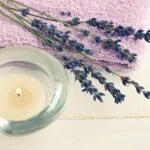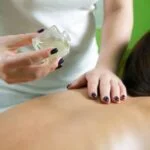Aromatherapy has gained popularity for its therapeutic benefits, offering a natural and holistic approach to well-being. One of the key tools in aromatherapy is the use of diffuser pads, which help disperse the aroma of essential oils into the air, creating a soothing and uplifting atmosphere. In this article, we will explore how to make aromatherapy diffuser pads and delve into the world of personalized aromatherapy experiences.
Understanding the significance of aromatherapy in daily life is essential for appreciating the importance of diffuser pads. Aromatherapy can promote relaxation, reduce stress, improve mental clarity, and even alleviate physical discomfort. Diffuser pads play a crucial role in enhancing this experience by effectively dispersing the aroma of essential oils into the surrounding environment. The type and quality of diffuser pads used can greatly impact the effectiveness of aromatherapy, making it important to understand the various options available.
In order to embark on creating personalized aromatherapy diffuser pads, it is essential to comprehend the different types of materials that can be utilized for this purpose. This includes exploring options such as felt, cotton, clay, and more. Additionally, it is vital to consider the advantages and disadvantages of each type of diffuser pad material to determine which best suits individual needs and preferences. With this knowledge in mind, individuals can make informed decisions when crafting their own diffuser pads.
Understanding Different Types of Diffuser Pads
When it comes to making aromatherapy diffuser pads, it’s essential to understand the different types of materials that can be used for this DIY project. The most commonly used materials for diffuser pads include felt, cotton, and clay. Each material has its own unique properties that can affect the diffusion of essential oils and the overall aromatherapy experience.
Felt diffuser pads are popular due to their absorbent nature, which allows them to hold onto essential oils for an extended period of time. This means that the scent can linger for longer periods, providing a continuous aromatherapy experience. However, some people may find that felt diffuser pads require more frequent replacement compared to other materials.
Cotton diffuser pads are known for their soft and breathable qualities, making them ideal for holding onto and dispersing essential oils effectively. They are a great option for those who want a reusable and eco-friendly solution for their aromatherapy needs. Additionally, cotton diffuser pads can easily be washed and reused multiple times.
On the other hand, clay diffuser pads offer a unique way to enjoy aromatherapy on-the-go. These porous pads are compact and perfect for creating personalized scents in small spaces like cars or closets. By adding a few drops of essential oil onto the clay surface, users can enjoy a subtle yet long-lasting aroma throughout the day.
No matter which material you choose for your aromatherapy diffuser pads, understanding the pros and cons of each type will help you make an informed decision based on your personal preferences and intended use. When making your own diffuser pads at home, consider experimenting with different materials to find which one best suits your needs and enhances your aromatherapy experience. That’s exactly how to make aromatherapy diffuser pads.
Materials Needed for Making Aromatherapy Diffuser Pads
Making your own aromatherapy diffuser pads can be a fun and creative way to enhance your relaxation and wellness routine. To get started with this DIY project, you will need a few key materials. Here’s a detailed list of items you’ll need to make your own aromatherapy diffuser pads:
Materials:
– Felt or Cotton Pads: These will serve as the base for your diffuser pads. Felt is highly absorbent and excellent for holding essential oils, while cotton is soft and gentle on the skin.
– Essential Oils: Choose high-quality essential oils in your preferred scents for aromatherapy purposes.
– Scissors: You will need sharp scissors to cut the felt or cotton pads into the desired shapes and sizes.
– Airtight Container: This will be used to store the finished diffuser pads when they are not in use.
– Dropper: A dropper will help you apply the essential oils onto the diffuser pads without making a mess.
Where to Purchase Materials:
1. Craft Stores: Visit local craft stores in your area to find a variety of felt or cotton pads, as well as essential oils available for purchase.
2. Online Retailers: Many online retailers offer a wide selection of felt, cotton pads, and essential oils for convenient purchasing.
Once you have gathered these materials, you can begin creating your own customized aromatherapy diffuser pads at home. Keep reading for a step-by-step guide on how to make aromatherapy diffuser pads.
Now that you have an idea of what materials are needed for this project, let’s move on to understanding how to create your own DIY aromatherapy diffuser pads. Below is a budget-friendly guide on how to make aromatherapy diffuser pads at home using affordable materials.
Step-by-Step Guide on Making Aromatherapy Diffuser Pads
Aromatherapy diffuser pads are a fantastic way to enjoy the benefits of essential oils on the go. Whether you want to relax, energize, or focus, having your favorite scents with you throughout the day can significantly improve your well-being.
Making your own diffuser pads is not only cost-effective but also allows you to customize the shape, size, and scent according to your preferences. In this step-by-step guide, we will walk you through how to make aromatherapy diffuser pads at home.
To start making your own aromatherapy diffuser pads, here are the materials you will need:
- Absorbent material: Choose a material that can hold essential oils such as felt or cotton fabric
- Scissors: For cutting the material into desired shapes and sizes
- Essential oils: Your favorite scents for aromatherapy
- Ziplock bags: To store and carry the finished diffuser pads when not in use
Once you have gathered all the necessary materials for making diffuser pads, follow these simple steps to create your customized aromatherapy accessories:
- Cut the absorbent material into small squares or shapes of your choice.
- Place a few drops of essential oil onto the absorbent material.
- Allow the essential oil to fully soak into the material before using it in a diffuser.
Remember that different types of materials may require slightly different methods for optimal diffusion. Experiment with various types of absorbent materials and essential oil combinations to find what works best for you.
Not only is making aromatherapy diffuser pads a fun and creative DIY project, but it also allows you to control the quality and scent intensity of each pad. With just a few simple materials and some creativity, you can enjoy personalized aromatherapy experiences wherever you go.
For more detailed instructions on how to make aromatherapy diffuser pads using specific materials like felt or cotton fabric, be sure to check out our tutorials section for step-by-step guides.
Sourcing Quality Essential Oils for Diffuser Pads
When it comes to creating aromatherapy diffuser pads, sourcing high-quality essential oils is essential for achieving the desired therapeutic benefits. Whether you are looking to promote relaxation, focus, or energy, the right essential oils can significantly enhance the aromatherapy experience. In this section, we will explore the importance of using quality essential oils and provide valuable tips for selecting and purchasing them.
Recommendations for Reputable Brands and Sources
There are numerous brands and sources that offer essential oils, but not all are created equal. It is important to seek out reputable brands that prioritize purity and sustainability in their production processes. Some well-known brands that consistently deliver high-quality essential oils include doTERRA, Young Living, and Plant Therapy. Additionally, specialty shops and apothecaries often carry a wide selection of pure essential oils sourced from around the world.
For those who prefer the convenience of online shopping, there are reputable e-commerce platforms dedicated to providing a curated collection of premium essential oils. Websites such as Aroma Foundry and Rocky Mountain Oils have gained recognition for their commitment to offering pure and ethically-sourced oils. By investing in essential oils from trusted brands and sources, you can ensure that you are receiving authentic products with genuine therapeutic properties.
Tips for Selecting the Best Essential Oils
When selecting essential oils for your aromatherapy diffuser pads, consider your specific needs and preferences. For promoting relaxation and stress relief, lavender, chamomile, and ylang-ylang are popular choices due to their calming effects. On the other hand, citrus scents like lemon and orange are known for uplifting moods and increasing mental clarity. Peppermint and eucalyptus are ideal for promoting energy and alertness.
To determine the quality of an essential oil, look for labels indicating that the oil is 100% pure or therapeutic-grade. Avoid products labeled as “fragrance oil,” as these may contain synthetic additives that diminish the therapeutic value of the oil. Lastly, consider purchasing smaller quantities of different essential oils initially to experiment with various scents before committing to larger bottles.
Tips for Maintaining Aromatherapy Diffuser Pads
Making your own aromatherapy diffuser pads can be a rewarding experience, and once you have successfully created your personalized pads, it’s important to know how to maintain them for long-lasting use. Proper maintenance ensures that the scent and effectiveness of the essential oils remain potent over time. Here are some tips for maintaining your aromatherapy diffuser pads.
First, it is important to understand that diffuser pads can absorb the essential oils and hold onto their scent for an extended period. However, over time, the scent may start to fade. To refresh the scent of your diffuser pads, simply add a few drops of essential oil onto the pad and let it absorb for a few minutes before using it again. This easy step will revitalize the aroma and allow you to continue enjoying the benefits of aromatherapy.
Additionally, it is recommended to clean your diffuser pads regularly to remove any buildup or residue from previous uses. Depending on the material of your diffuser pad, you can gently hand wash it with mild soap and water, or simply wipe it down with a damp cloth. Allow the pad to dry completely before using it again to prevent any mold or mildew from forming.
Finally, storing your aromatherapy diffuser pads properly is crucial in maintaining their quality. Keep them in an airtight container or resealable bag when not in use to prevent the scent from dissipating too quickly. Store them away from direct sunlight and heat to preserve their potency.
By following these maintenance tips, you can ensure that your homemade aromatherapy diffuser pads continue to enhance your daily life with their soothing scents and therapeutic benefits. Now that you know how to make aromatherapy diffuser pads and maintain them properly, you can fully enjoy the benefits of personalized aromatherapy in various settings.
Exploring Creative Uses for Aromatherapy Diffuser Pads
Aromatherapy diffuser pads are versatile tools that can be used in a variety of settings to enhance the ambiance and promote well-being. While they are commonly associated with diffuser jewelry, such as necklaces and bracelets, there are many other creative ways to incorporate these pads into daily life.
One innovative use for aromatherapy diffuser pads is in the car. A simple way to do this is by placing a few drops of essential oil onto a felt diffuser pad and attaching it to the air vents in the vehicle. This can help create a calming or energizing atmosphere during commutes, making the driving experience more enjoyable.
Additionally, diffusing essential oils in workspaces can help improve productivity and reduce stress levels. Aromatherapy diffuser pads can be discreetly placed under computer monitors or on office desks to provide subtle yet effective aromatherapy benefits throughout the workday.
For home use, consider placing diffuser pads infused with relaxing essential oils in linen closets or dresser drawers to keep clothes smelling fresh and delightful. They can also be placed near air vents or on ceiling fan blades to distribute pleasant scents throughout different areas of the home.
Lastly, placing diffuser pads inside pillowcases or cushions adds an extra layer of comfort and relaxation for those looking for a restful night’s sleep. The subtle aroma released from the diffuser pad can create a soothing environment perfect for winding down after a long day.
By exploring these creative uses for aromatherapy diffuser pads, individuals can fully maximize the benefits of essential oils in various aspects of their lives.
| Creative Use | Description |
|---|---|
| Car | Place on air vents for calming or energizing atmosphere during commutes |
| Workspace | Improve productivity and reduce stress levels at work by discreetly placing under computer monitors or on office desks |
| Home | Keep clothes smelling fresh and delightful by placing in linen closets or dresser drawers; distribute pleasant scents throughout different areas of the home by placing near air vents or on ceiling fan blades |
Community Showcase
Creating homemade aromatherapy diffuser pads can be a rewarding and creative experience. Not only do these DIY creations enhance the effectiveness of essential oils, but they also allow individuals to personalize their aromatherapy experience. In this section, we celebrate the creativity and success of our readers as they share their own homemade diffuser pad stories.
Reader Submissions
Our readers have been busy crafting their own aromatherapy diffuser pads and have shared their unique creations with us. From intricate designs to personal touches, each submission showcases the individuality and creativity of our community. These reader submissions serve as inspiration for others looking to embark on their own DIY aromatherapy journey.
One reader submitted a set of diffuser pads made from organic cotton materials, carefully hand-stamped with uplifting quotes and symbols that hold personal significance. Another shared a collection of felt diffuser pads adorned with beautiful embroidery, adding an extra touch of elegance to the aromatherapy experience. Each submission is a testament to the endless possibilities of creating custom diffuser pads that reflect one’s personality and preferences.
Success Stories
In addition to sharing their stunning creations, readers have also reported positive experiences with using their homemade diffuser pads. Many have expressed how the personalized touch has enhanced their relaxation sessions, meditation practices, or even improved their focus during work hours. The versatility of these DIY pads lends itself well to various settings – from home to office to car – making them a valuable addition to daily life.
Readers have also reported that using high-quality essential oils in conjunction with their homemade diffuser pads has elevated the overall aromatherapy experience. By selecting oils known for enhancing specific moods or offering therapeutic benefits, individuals can tailor their aromatherapy sessions to meet their unique needs.
As we continue to receive more submissions and success stories from our readers, it becomes increasingly clear that homemade aromatherapy diffuser pads are not only a craft project but also a meaningful tool for improving mental and emotional well-being. We encourage all members of our community to share their experiences with us as we celebrate the creativity and positive impact of personalized aromatherapy diffusion.
Conclusion and Call to Action
In conclusion, aromatherapy diffuser pads are a fantastic way to enhance the benefits of aromatherapy in our daily lives. Whether it’s for relaxation, focus, or energy, diffuser pads can be customized to suit individual needs and preferences.
Understanding the different types of materials used for diffuser pads and how to make them allows us to take full control over the scents and therapeutic properties we want to surround ourselves with. By following the step-by-step guide provided in this article, anyone can easily create their own diffuser pads at home.
It’s important to note how easy it is to source quality essential oils for use with diffuser pads. There are reputable brands and sources available where readers can purchase essential oils for their DIY projects. Additionally, maintaining these pads and refreshing their scents over time is simple and cost-effective, ensuring that they continue to provide the desired aromatherapy experience.
As readers explore creative uses for their homemade aromatherapy diffuser pads, they are encouraged to think outside the box and apply them in various settings such as home, office, or even in their car. The possibilities are endless. Lastly, by sharing reader submissions and success stories, we hope to inspire others to create and share their own experiences with homemade diffuser pads. Take action today and start creating your own personalized aromatherapy diffuser pads for a truly unique sensory experience.
Frequently Asked Questions
What Can I Use as a Diffuser Pad?
Diffuser pads can be made from a variety of materials, such as felt, cotton, bamboo, or other natural fibers. These materials are absorbent and can hold essential oils to be diffused into the air.
What Are Essential Oil Diffuser Pads Made Of?
Essential oil diffuser pads are typically made of materials like cellulose or natural fibers. These materials are chosen for their ability to absorb and hold essential oils, allowing them to slowly release the scent when placed in a diffuser.
How Do You Make Scent Pads?
Scent pads can be made by cutting small pieces of absorbent material like cotton or felt, then adding a few drops of essential oil onto the pad. The pad can then be placed in a diffuser or locket to diffuse the scent throughout the room.

Are you looking for a natural way to improve your health and wellbeing?
If so, aromatherapy may be the answer for you.





